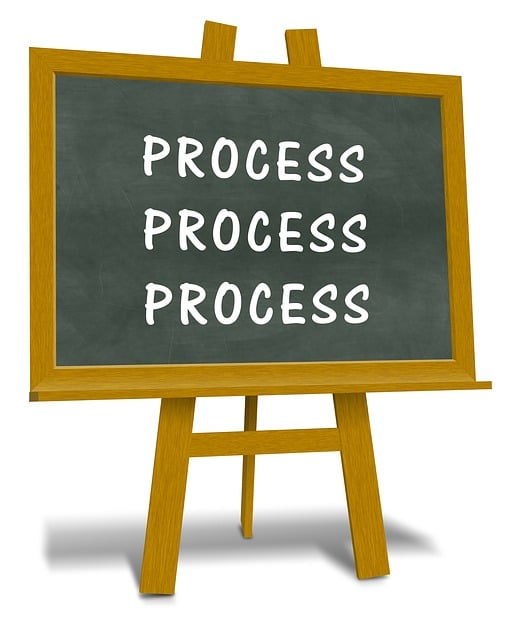When a vehicle is deemed a total loss and acquires a salvage title, its journey back to the road isn’t straightforward. The process of re-registering such a car hinges on thorough inspections and adherence to strict safety standards post-repair. This article delves into the intricacies of converting a salvage title to a rebuilt title, outlining the necessary steps for title restoration, from understanding the requirements to navigating state-specific car title laws. We’ll explore the costs involved in this process and how proper documentation and compliance can enhance both the vehicle’s resale value and its legal status on public roads. Whether you’re an owner looking to rehabilitate a totaled car or a buyer assessing a potential purchase, this guide will provide valuable insights into salvage title transfer, rebuilt title insurance, and the path to road legality.
- Understanding Salvage Title Transfer Requirements
- The Path to Rebuilt Title Insurance: Documentation and Repair Verification
- Navigating Car Title Laws by State for Salvaged Vehicles
- Assessing the Cost of Salvage Title Conversion and Rebuilding
- Maximizing Resale Value Through Effective Salvage Title Branding and Legal Compliance
Understanding Salvage Title Transfer Requirements

When navigating the process of transferring a salvage title to a rebuilt title, understanding the specific requirements is paramount for compliance and legal roadworthiness. A salvage title is typically issued when a vehicle has been damaged to a certain extent that it’s deemed a total loss by an insurance company. To start the salvage title transfer process, a comprehensive inspection is mandated to ascertain the vehicle meets safety standards post-repair. This rigorous evaluation is essential for ensuring the vehicle can be safely operated on public roads. Once the vehicle passes this inspection, the next step involves submitting a rebuilt title application to the Department of Motor Vehicles (DMV). This application necessitates detailed documentation of all repairs made, which serves as proof that the vehicle has been restored to safe operational condition.
The process of clearing a salvage title involves adhering to car title laws by state, which vary across jurisdictions. These laws dictate the necessary steps for rebuilding a totaled vehicle, including the required paperwork and potential inspection processes. Rebuilt title insurance is also an important consideration, as it can provide financial protection in case the repaired vehicle has undisclosed issues that arise after the title conversion. The cost associated with salvage title conversion and the resale value of the vehicle are influenced by these legal requirements and the thoroughness of the repair documentation. It’s crucial to understand that the branding of a car title as ‘salvage’ can significantly impact its market value, often making it harder to sell without going through the rebuilding process. To effectively clear a salvage title, one must be well-versed in the specific laws and regulations applicable to their state and ensure all repair work is transparently documented. This due diligence not only restores the vehicle to legal compliance but also enhances its resale value by reassuring potential buyers of its roadworthiness.
The Path to Rebuilt Title Insurance: Documentation and Repair Verification

When a vehicle is branded with a salvage title after being involved in an accident or deemed a total loss, the path to reinstating its roadworthiness and increasing its value involves careful documentation and thorough repair verification. The process begins with the submission of comprehensive paperwork to facilitate the salvage title transfer. This includes the vehicle’s salvage title certificate, proof of ownership, a detailed description of the damage, and evidence of the repairs performed. The repair verification is crucial as it must align with car title branding laws, which vary by state. These laws dictate the extent of repairs necessary for a salvage title transfer to a rebuilt title.
Once the vehicle undergoes the necessary totaled car title repair and the repairs are verified, owners can proceed with the application for rebuilt title insurance. This step is integral in the process as it signifies that the vehicle meets the state’s car title laws and is fit to be back on the road. The application typically requires detailed documentation of the repair process, including photographs, receipts, and a completed rebuilt title application form. The cost for salvage title conversion can vary depending on the state’s requirements and the extent of the vehicle’s damages. After submission, an inspection will be conducted to ensure that the repairs are up to standard. Upon approval, the vehicle is issued a rebuilt title, which, when combined with the proper insurance coverage—rebuilt title insurance—allows the owner to legally drive their vehicle once more. This conversion not only clears the salvage title but also significantly enhances the vehicle’s resale value by signaling to potential buyers that it has passed all necessary inspections and adheres to rebuilding totaled vehicles regulations.
Navigating Car Title Laws by State for Salvaged Vehicles

When a vehicle is deemed a total loss and branded with a salvage title, the path to restoring it to roadworthy status involves navigating through a complex network of car title laws by state. These laws dictate the process for salvage title transfer and rebuilt title insurance requirements, ensuring that the vehicle meets safety standards before it can be considered for re-registration. The first step in this process is a comprehensive inspection. This scrutiny confirms that the totaled car title repair has addressed all necessary components and that the vehicle now adheres to the state’s regulations.
Once the repairs are verified, the owner must submit a rebuilt title application to the Department of Motor Vehicles (DMV). This application is not complete without detailed documentation of the repair process, which serves as evidence that the car has been properly fixed and meets the criteria for a rebuilt title. The cost associated with this salvage title conversion can vary significantly from state to state, as each jurisdiction may have its own set of car title branding laws and fees. It’s crucial for vehicle owners to understand these requirements and costs before embarking on the repair process. Rebuilding totaled vehicles is not just a mechanical endeavor; it involves understanding and adhering to specific legal frameworks, which can influence the car’s resale value as well as its insurability. Owners should explore how to clear a salvage title thoroughly to ensure they follow all protocols and avoid future complications on the road. Rebuilding title insurance is also an important consideration to protect against potential issues that may arise after the title has been restored, safeguarding the investment made in the vehicle’s restoration process.
Assessing the Cost of Salvage Title Conversion and Rebuilding

When contemplating the conversion of a salvage title to a rebuilt title, one of the key factors to consider is the cost associated with this process. The salvage title transfer typically involves an initial appraisal to determine the extent of damage and the estimated cost for repairs. This step is crucial as it sets the stage for budgeting the entire operation. The cost of repairing a totaled car title can vary significantly based on the vehicle’s make, model, and the nature of the damage. It’s advisable to seek out rebuilt title insurance to mitigate potential financial risks during this phase. Insurance policies designed for this purpose can offer peace of mind and protection from unexpected expenses.
The total cost will also be influenced by car title laws by state, which dictate specific requirements for the salvage title conversion process. These may include not only the repair costs but also the fees for processing the application for a rebuilt title with the Department of Motor Vehicles (DMV). Additionally, one must account for the documentation required to prove that all repairs meet safety standards and are up to code. The resale value of the vehicle post-conversion can be substantially higher than with a salvage title branding, provided the rebuilt title is correctly issued and the car undergoes thorough inspection and meets all state regulations. Prospective buyers will often ascertain a vehicle’s past by checking its title status; thus, clearing a salvage title through meticulous repair and adherence to state laws can significantly enhance the vehicle’s marketability and legal roadworthiness. When engaging in rebuilding totaled vehicles, it’s imperative to approach the process with a clear understanding of all associated costs and to ensure compliance with car title branding laws to achieve a successful salvage title conversion.
Maximizing Resale Value Through Effective Salvage Title Branding and Legal Compliance

When a vehicle is branded with a salvage title after being totaled, understanding the implications and taking proactive steps to navigate the salvage title transfer process can significantly impact its resale value. The first critical step in maximizing the resale value of a salvaged car is ensuring it undergoes a thorough inspection and adheres to all salvage title conversion requirements set forth by state car title laws. This involves meticulous repair documentation that aligns with the rebuilt title insurance standards, which verify the vehicle’s structural integrity and functionality. The process begins with a comprehensive evaluation to confirm that the vehicle meets safety standards, which is essential for the subsequent salvage title clearance.
Once the repairs are completed and the vehicle passes inspection, the next phase involves submitting a rebuilt title application to the Department of Motor Vehicles (DMV). This application must be accompanied by detailed records of the repair process, including part and labor receipts that substantiate the work performed. The salvage title conversion cost can vary by state, but it is an investment in the vehicle’s future roadworthiness and marketability. After approval, the vehicle receives a rebuilt title, signifying that it has been restored to a drivable condition and legally complies with car title branding laws. This rebranded status not only allows the vehicle to be registered and driven but also enhances its salvage title resale value, as potential buyers are more likely to consider a vehicle that has been transparently and properly repaired and documented. Understanding the intricacies of rebuilt title insurance and adhering to each step of the process, from inspection to final registration, is key to not only complying with car title laws by state but also in increasing the vehicle’s value on the open market.
Reclaiming a salvaged vehicle and transitioning it back onto the road is a meticulous yet rewarding endeavor. By adhering to the salvage title transfer process, individuals can effectively navigate the requirements and legalities involved in totaled car title repair. The journey from a salvage title to a rebuilt title is facilitated by thorough inspections, comprehensive documentation for rebuilt title insurance, and adherence to car title laws by state. Understanding the conversion cost associated with salvage title conversion and rebuilding totaled vehicles is crucial for budgeting and ensuring financial preparedness. Furthermore, implementing effective car title branding laws post-restoration not only clears a salvage title but also significantly enhances the vehicle’s resale value. This comprehensive guide serves as an invaluable resource for anyone looking to restore a salvaged car and realize its potential on the open market.



